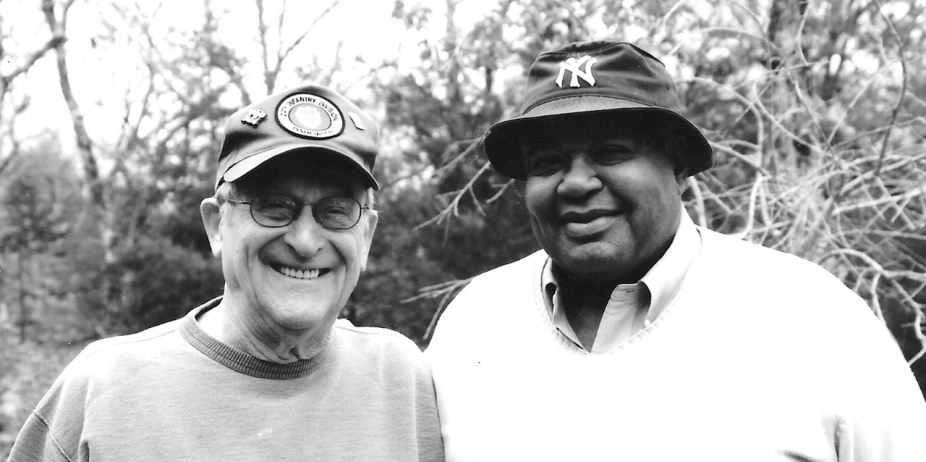
Herb Foster and George Singfield together on Martha’s Vineyard, Edgartown, Mass., in an undated photo. They were, as Singfield liked to put it, the “Salt and Pepper Team.” (Photo courtesy Herb Foster)
School desegregation: An emeritus faculty member and lessons from the 1970s and 80s
BY MICHELLE KEARNS
Decades before Black Lives Matter came to be, Herbert Foster, now a GSE professor emeritus, was a white educator focused on teaching teachers about Black culture. His work bridged the divide between teachers and students after 1954’s Supreme Court Brown v. Board of Education desegregation ruling.
Misunderstandings about what Foster calls Black “street corner” culture led to disastrous outcomes for Black students, particularly males, who were labeled as discipline problems and assigned to special education programs.
In the 1970s and 1980s, Foster traveled nationwide explaining Black urban culture to teachers with his friend George Singfield, a Black special education administrator.
“Today, you’re talking about white privilege,” said Singfield, now a consultant. “Back then they were talking mostly about communities not being open and understanding. The rules were not really set up for the minority urban kids, but for nice, neat well-accorded school districts.”
Not much has changed, said Foster, who retired in 1998. Their culture-bridging seminars during social unrest in places like South Boston are still needed.
With all that has been done, the racist and the ethnocentric feelings that people have about Black males are still there."
His career was defined by cultural adaptations. A Brooklyn native, he was a Morse code radio operator in occupied Japan in World War II before earning an EdD from Columbia University’s Teachers College. His expertise in urban education led UB to hire him to direct the now-closed Woodlawn Teacher Education Center. He taught industrial and graphic arts in New York City for 17 years, mostly at the infamous, now defunct “600” public schools, where teachers once earned an extra $600 to teach students labeled delinquent and emotionally disturbed.
His interest in transforming difficult student-teacher dynamics followed a humiliating early-career episode as a substitute mechanical drawing teacher. After a student threw a paper wad, Foster said something like, “Is that all you got?” Chaos ensued. A T-square flew. Students ran on tabletops. Foster, terrified, hid under the desk. That weekend, he said he thought about giving up.
Instead, on Monday he took control with the sort of nuanced move he would later teach to educators. On the blackboard, he wrote the family name he had used—Finklestein—before it was changed to protect against anti-Semitism. As he expected, a male student sneered at its connection to the word “fink.” Foster responded. With knees shaking, he took charge and told the student: “Read that.” The young man did and from then on, Foster said, the class was easy to handle.
“The teacher has to recognize that a lot of their classroom behavior is a performance,” said Foster in a 1974 Phi Delta Kappan interview about his book ‘Ribbin’, Jivin’, and Playin’ the Dozens.”” By focusing on just one student, the teacher may “lose the rest of the class.”
Reflecting on his work, Foster recalled a letter a white teacher wrote saying how much his approach had helped her. She had been regularly suspending three boys. “She read my book, understood what was going on and,” said Foster, “never had another Black male suspended.”
As he reads and watches the news about protests and social injustice, Foster can imagine his old workshops could be a help. If he could start over, he would go back to their original mission of teaching how to understand students and respond with empathy. “If the teacher is a professional,” he said, “he has to interpret and change first.”